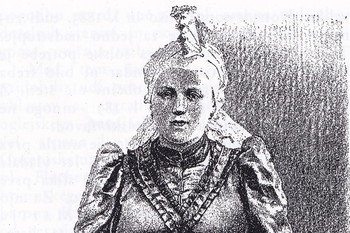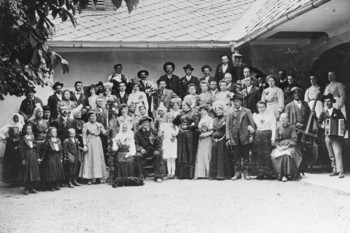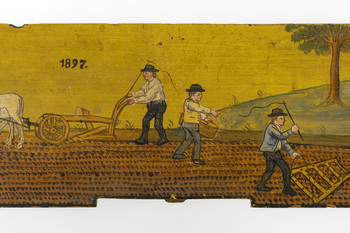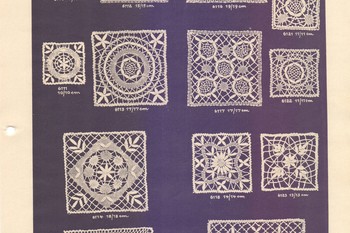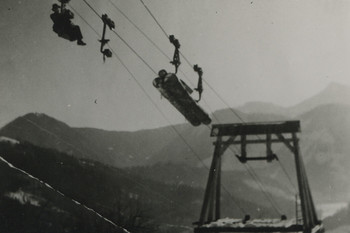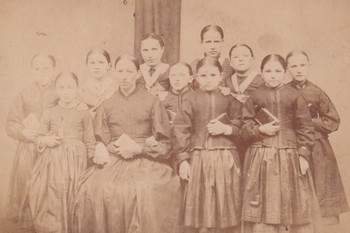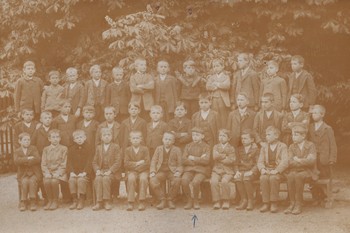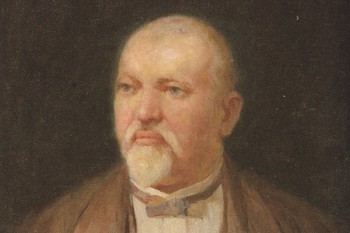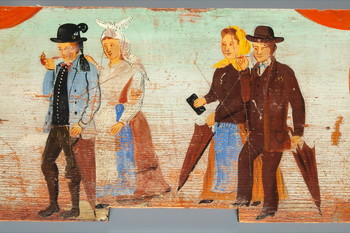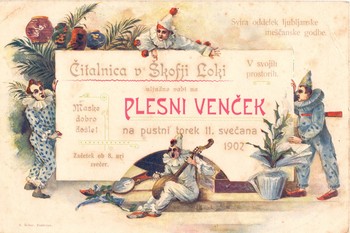The Long 19th Century
The Škofja Loka Area from 1803 to 1914
Castle Gallery, Permanent Collections of Škofja Loka Museum
29 Nov 2023 – 31 May 2024
Team: Biljana Ristić, Mojca Šifrer Bulovec, Sara Šifrar Krajnik, Simona Žvanut PhD
Through selected intertwined chapters, the exhibition illustrates the local life and development in the town of Škofja Loka, the Selca and Poljane Valleys and Žiri between 1803, when the Škofja Loka Seignory was nationalised, and the onset of World War I in 1914.
Individual exhibition topics have been placed in a wider European and Slovenian context of the events and processes that took place during the “long” 19th century. The exhibition presents the administrative changes in the Illyrian Provinces and the Austrian Empire, the imperial cult and the great revolution of 1848, also known as the Springtime of Nations. Throughout the 19th century, the inventions and improvements brought about by global, Slovenian and local pioneers modernised agriculture, animal husbandry, fruit growing and beekeeping, as opposed to education and healthcare, which did not undergo any major changes until the second half of the 19th century.
Economic development was fostered by the Austrian Southern Railway, which connected the Škofja Loka area with places far and near, on the other hand, however, it caused the collapse of important local crafts. The second half of the 19th century was marked by, among other things, people emigrating from the Škofja Loka area, mainly to the USA, in search of higher earnings.
The day-to-day life was greatly influenced by church-related circumstances, religious festivals and celebrations, as well as the changing fashion trends and the numerous societies that existed in the period between the second half of the 19th century and the start of World War I.
This exhibition is the first part of a larger project that deals with the 19th century in the Škofja Loka area. In the second half of 2024, it will be followed by an exhibition dedicated to folk, religious and secular arts, and a symposium on selected topics from the Slovenian 19th-century past.
The project is part of the research aimed at a comprehensive overhaul of historical collections, which was started in 2016. It began with the exhibitions and a collection of papers titled “The First World War in the Škofja Loka Region: They Cannot Touch Us, the Hostile Wars!” in 2018 and continued in 2021 with the exhibition and a collection of papers “From Liberation to Independence: The Škofja Loka Area from 1945 to 1991”.
Aiming to increase the accessibility of the exhibition content, the exhibition texts are also available in an easy-to-read version and in Braille, the video content is subtitled, and there are various marked tactile objects that can be touched. The Long 19th Century exhibition also features an accompanying and educational programme.

